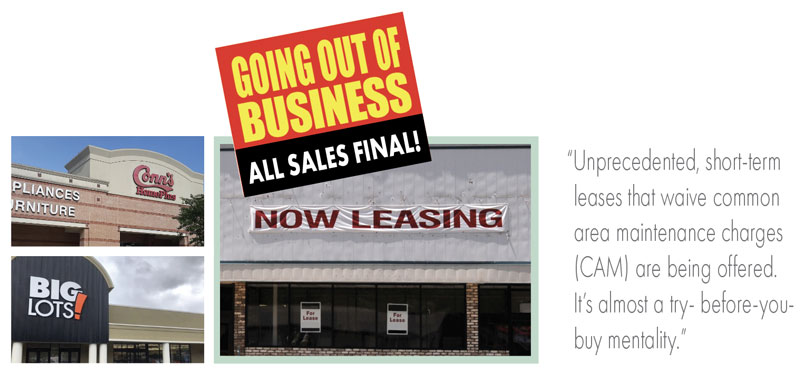Interview with Tom Liddell, Planned Furniture Promotions
Tom Liddell looks at business challenges and opportunities home furnishings retailers are likely to face in
2025.
For his fifth annual assessment and retail forecast, Tom Liddell, Sr. Vice President & Director of Planned
Furniture
Promotions, Inc., identifies opportunities and challenges likely to face furniture retailers in 2025. Overall,
he is
more optimistic than last year. Liddell grew up in furniture retail, becoming a sales rep and manufacturing
executive.
An astute observer of the furniture industry, he prepared his comments after speaking with clients and retailer
friends
in trading areas across the country.
“In the 2024 ‘What’s in Store interview,’” Liddell recalled, “I mentioned the need for furniture retailers to
focus on
vendor diversification. After that article was published in the January issue, I received a significant number
of emails
and calls thanking me for the input. This year, it’s clear that retailers still need to diversify their
sourcing,
especially as a hedge against possible tariffs and supply chain disruptions.
“Another reason to diversify is to defend against competitors, including companies like Design Trade Service,
which are
popping up everywhere. DTS (designtradeservice.com) is probably the best-known of these. The company offers
‘complimentary membership to qualified professionals.’ Retailers interested in wholesaling their products don’t
qualify
for membership, but individuals can join by submitting trade credentials—a tax resale certificate. DTS has
thousands of
customers interested in purchasing mid-range and higher-end home furnishings.
“Any furniture retailer will recognize the brands (designtradeservice.com/brands) offers. Products may be sold
to
designers for 15% or 20% over the published wholesale price. Many designers have moved to fee-based models and
are
passing on these savings to their clients. So, there are literally no controls on what they can sell these
products to
consumers for.
“To prep for this interview, I spoke with retailers, who were unaware they were probably losing business to
these kinds
of platforms. Designers used to bring customers into furniture stores to buy, but this is no longer the case.
However,
designers still use retailers as showrooms because their clients want to see the product they’ll ultimately buy.
I
believe it’s a serious problem for furniture retailers. Google the phrase ‘companies similar to Design Trade
Services,’
and you’ll find many brands, including West Elm and RH, that have initiated their own programs.
“To prep for this interview, I spoke with retailers who were unaware that they were probably losing
business
to these
kinds of platforms.”
“My point is that retailers must pay attention to new types of competitors in the furniture marketplace and
speak to
their vendor partners about this issue. Some retailers might want to reevaluate who they are willing to do
business with
and treat it as a vendor diversification issue.”
Election Fallout
“Retailers and consumers were in limbo up until the election. Now that there’s more certainty, the retailers I
polled
said their customers, and more importantly, their employees, feel more secure about their jobs and income
potential.
There was an increase in business following the election, and many believe it will continue to normalize and
improve.
And, of course, many furniture companies are looking forward to reduced business taxes, which is a more likely
possibility under the Trump administration.
“Two resolved issues will come into play in 2025, including pent-up demand for home furnishings and the
increased
availability of broadcast, streaming and cable media that simply weren’t available before the election due to
overwhelming competition from the candidates and higher rates for airtime.”

Expansion Opportunities
When asked if furniture retailers are considering putting expansion on the front burner, Liddell replied, “Yes,
is my
short answer. However, staffing is still a major problem holding it back.”
Attractive Leases: “There are many desirable leases available,” he continued, “due to
bankruptcy filings. Some retailers
would like to take advantage of these but staffing locations is a significant problem.
“For example, JCPenney recently announced that they will put 120 properties in 34 US states on the market in
early
January. It’s been reported that Macy’s closed 50 stores in 2024 and will shutter another 100 over the next few
years.
“I’ve heard from retailers and industry friends that unprecedented, short-term leases that waive common area
maintenance
charges (CAM) are being offered. It’s almost a try-before-you-buy mentality with no personal guarantees.”
Home Sales & Interest Rates: “Despite the positives, there are still concerns. Existing and new
home sales are still
depressed. However, there’s still an expectation in the industry that despite what the Fed implied at its
December 2024
meeting, rate declines will continue based on political promises made before the election. Nobody expects that
will
happen overnight, but the housing situation and retail furniture sales will improve when that happens.”
Consumer Debt: “Going into the election,” Liddell observed, “consumer debt was at an all-time
high. This, along with
housing issues, will take some time to resolve. Even if people have a pent-up desire to buy furniture, there
will still
be credit issues for those who need to stabilize their finances, for wages to catch up, or for a new normal to
kick in.”
Tariffs: “At the time of this interview,” he said, “tariffs are still an open question. A 25%
tariff on a $500 item
brings the cost for retailers up to $625. Some freight carriers and vendors charge for backhauling based on the
percentage of the load. That can have a significant impact on some retailers. That potentially raises a $1,000
item to
$1,299, assuming a 50% margin. However, instead of living with those increases, retailers will explore
alternative
sources unless a product is extremely well priced to begin with, or it’s unique.”
Inventory: “Most vendors and retailers have worked through their COVID-era inventory buildups,
and generally, retail
floors look much fresher. However, there haven’t been many monumentally successful product introductions—the
kind that
everybody feels they must have on their floors—for some time now.”
Retailer Health:
“PFP has noticed that retailers’ health disproportionately depends on where businesses are located. There are
areas of
the country where business is booming, consumers are healthier financially, and average incomes are higher.
However,
there are also pockets negatively affected by storms, where consumers have been hard hit, especially by huge
insurance
rate increases. And, this is having a disastrous impact on furniture sales. We’ve received as many as four or
five
distressed calls from retailers In some of those communities, asking questions and conducting discovery to
prepare for
worst-case scenarios.

“How healthy are retailers overall? Those who own their real estate and don’t have hefty occupancy expenses have
been
able to get by.”
Promotional Stores: “Stores that depend on selling lower-end product continue to struggle.
Wayfair and other online
retailers are absolutely killing these brick-and-mortar stores. The situation has been made worse by Target,
Walmart,
Sam’s, Costco, and other nontraditional furniture retailers that have jumped into the furniture business. The
good news
is that many vendors have stepped up and are working with furniture retailers to give them the ammo they need to
compete. For example, we saw a boxy, Mid-century modern sofa priced at $175 at the recent High Point market.
That’s
pricing we haven’t seen in quite some time.
“Vendors are offering tools at almost every price point,” Liddell continued, “helpful to retailers as loss
leaders, or
to develop a perception of extreme value, but also helping to keep their blended margins high. That can be the
secret to
success when business is down.

“Balancing spending with profitable revenue is still the most important thing retailers can do. That may include
cutting
payroll when necessary. Last January, I mentioned that some storeowners often wait too long to make necessary
payroll
cuts when times are tough. That was better advice for the average furniture store last year, but it’s still
relevant for
some.”
Retail Bankruptcy Fallout
Liddell reported an additional concern. “Many people,” he said, “are waiting for the other shoe to drop, as it
relates
to additional vendor closings following recent retail bankruptcies. Most of these vendors can survive the loss
of one to
four million dollars. The real impact for them will be future loss of business, representing a disproportionate
decrease
in their overall volume.
“Some Tupelo manufacturers, for example, have lost 50% of their total gross manufacturing volume due to the
disappearance of Conns, Badcock, RoomPlace and, of course, Big Lots. Many of these manufacturers will survive,
maintain
the same number of employees and remain competitive. There’s a slight chance that others might end up at a
competitive
disadvantage and disappear.”
“Many people are waiting for the other shoe to drop as it relates to additional vendor closings
following
recent retail
bankruptcies.”
Marketing
“Almost every day, a new way is introduced to measure door count metrics to better remarket to customers.
Companies with
odd names spelled wrong on purpose, like the drug companies, are popping up to help stores with their
marketing.”
Artificial Intelligence
“Last year, I encouraged retailers to experiment with AI for tasks like generating advertising images and
cleaning up or
writing copy. These were straightforward, cost-effective entry points for small and medium-sized retailers to
try AI.
Since then, the technology has evolved rapidly, offering opportunities to improve marketing, operations, and
customer
engagement. However, given their unique challenges and available resources, small and medium-sized retailers
need to
consider whether or not to embrace these advancements in 2025.”
AI and Content Generation: “For smaller retailers, one of the most accessible applications of AI
remains content
generation. Tools like AI-driven copywriting software and image generators can save time and ensure
professional-quality
marketing materials at a fraction of the cost of hiring dedicated creative teams. This is particularly important
for
those with websites that are new or still in the development stages. Similarly, AI-powered chatbots and Natural
Language
Processing (NLP) tools can handle basic customer inquiries, such as inventory availability, delivery timelines,
and
product information, via text, email, or even voice. These solutions are often scalable and available as
plug-ins for
e-commerce platforms, making them manageable even for retailers with limited technical expertise.”
AI and Customers: “AI-enabled customer qualification and scoring tools can also be beneficial
but should be implemented
thoughtfully. Many customer relationship management (CRM) systems now offer AI features at accessible price
points,
allowing small retailers to identify high-potential customers and personalize follow-ups. For example, analyzing
purchase patterns or online behavior can help prioritize outreach efforts, saving time and maximizing impact.”
AI and Operations: “On the operations side, AI tools for inventory management are increasingly
affordable and
user-friendly, helping smaller retailers avoid overstocking or stockouts. These tools provide actionable
insights, such
as predicting which items will sell well based on historical trends, making them an excellent starting point for
improving efficiency without requiring a full-scale transformation.”
AI and Timing: “That said, retailers might focus first on bringing in tools that address their
most pressing pain points
and start with solutions that integrate easily with their existing systems. Many AI tools are now
subscription-based and
require minimal upfront investment, making them feasible for smaller budgets. However, retailers should avoid
adopting
AI for its own sake. Technology should support clear business goals and align with the retailer’s brand and
customer
experience. Enabling ineffective or incomplete answers can cause immense frustration for consumers, potentially
alienating your customers. A human voice is almost always better if you have the staff for it and can handle the
business.”
AI and Expertise: “There have been times when we’ve been brought in to help close a store, and
store owners can’t
explain what the technology they purchased does.
“That’s why it’s important to bring digital-native people into businesses, treat them and pay them well. It’s bad
business to bring good people in, ask them to set up systems using third-party tech companies, and then lose
them. That
can spell disaster.
“Ultimately,” Liddell remarked, “the goal for smaller retailers is to use AI to do more with less: saving time,
improving accuracy, and delivering better service. By starting small, evaluating the impact, and scaling
gradually, even
modest operations can reap the benefits of AI without overwhelming their teams or budgets.”
“There will still be credit issues for those who need to stabilize their finances, for wages to catch
up, or
for a new
normal to kick in.”
Work Environments
Retail success in 2025 rests on attracting and keeping good employees. To this end, it’s a good idea to consider
how to
incentivize individual performance while balancing it with a team approach focusing on collaboration, friendly
workplaces and maybe collective compensation. When asked how retail work will likely change in 2025 and beyond,
Liddell
responded, “We’ve seen a trend toward friendlier, flexible workplaces.
“Many stores, he said, “are shortening working hours or adapting working environments to accommodate employees’
family
schedules. That’s been going on since COVID. The majority are taking a middle road, neither insisting—like
Tesla—that
all employees work onsite all the time, nor following Google’s lead by giving a month’s paternity leave.
“Companies in our industry have innovated. I know of a mattress manufacturer who struggled to find employees.
They
advertised, ‘People with criminal records encouraged to apply.’ The immensely successful program has had almost
no
turnover since its inception for people employed for 30 days or longer. Current workers decide if new employees
remain
employed after an initial 30-day trial period.
“People get weeded out if they are not a good fit. Perhaps they have a drug or anger issue. There’s an incentive
to keep
only those employees who will help the company succeed. That’s because they pay these individuals based on
company
performance instead of personal performance, resulting in a team mentality.”
“Home sales are still depressed. However, there’s still an expectation in the industry that rates will
drop
based on
political promises made before the election.”
Consumer Financing
Liddell added some warnings about financing. “Retailers,” he said, “must be careful not to use financing to the
point
where it eats up profit. It’s so easy for companies to throw a 48-month, no-interest program out there. Let’s
say
they’re paying a discount of 10.9%, and after all the bills are paid and the dust settles, net somewhere between
8% and
12%. That can be a problem.
“It generates more business, but often, salespeople offer it to virtually every shopper who walks in the door.
That’s
just not necessary. Instead, it should be used only as needed as a closing tool.” Liddle added, “Having good
partners in
the tertiary field has become much more important.
“The first step toward retail insolvency is responding to a fax offering quick cash flow loans. That seems like
common
sense. However, retailers sometimes receive emails from legitimate companies like American Express letting them
know
they can qualify for $200,000 to $500,000 within three days, at perhaps 21% interest. I can’t warn people
strongly
enough not to get caught up in that mess.”
Liddell concluded his remarks by saying he hopes that retailers avoid the pitfalls in 2025 and take advantage of
every
opportunity. “I’m glad to speak with Furniture World readers,” he said, “about my comments in this interview or
issues
they foresee. My contact information can be found at www.pfpnow.com.”